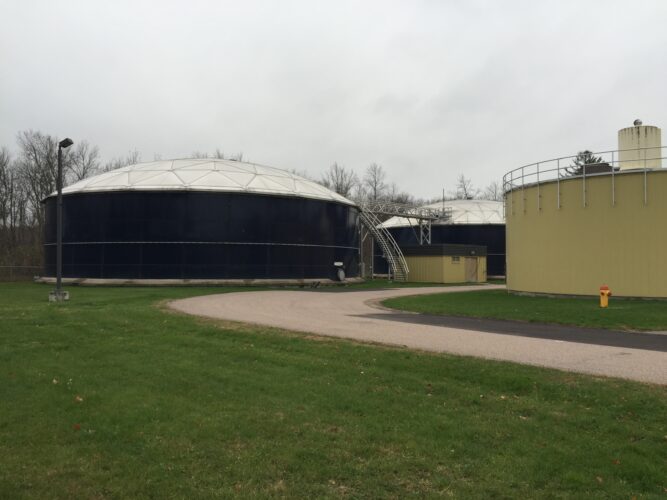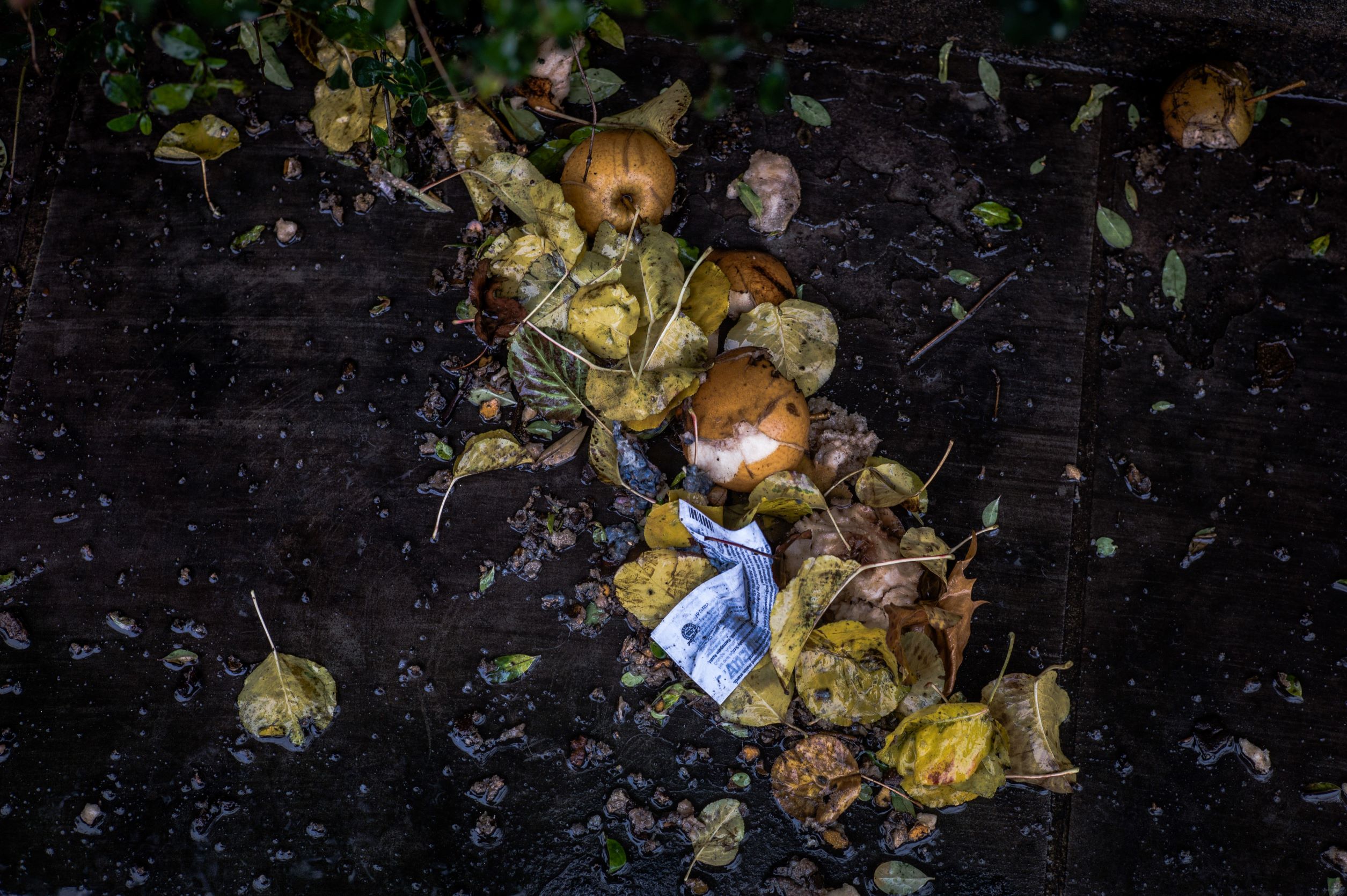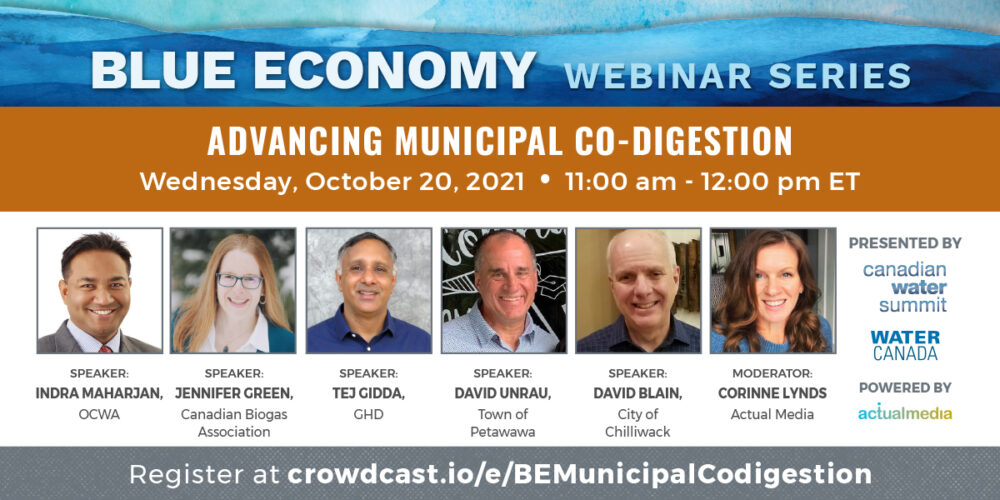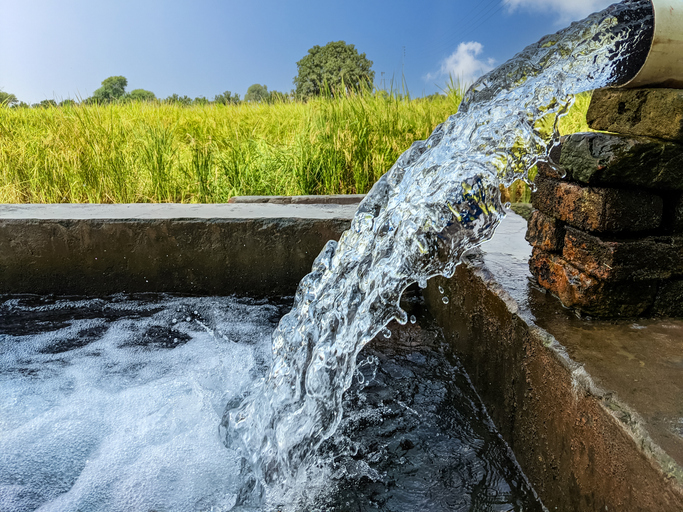Many stakeholders recognize that the amount of greenhouse gas emissions entering the atmosphere needs to be limited, if not reduced, given the negative implications of global warming.
At the municipal level, there’s an opportunity to help reduce emissions by diverting organic waste from landfills to wastewater treatment plants. This is so that the organic waste can be co-digested to produce biogas, which has a number of benefits.
Industry experts joined Water Canada for a webinar that examined the drivers for exploring municipal co-digestion, explored regulatory requirements and financing options for projects, and provided examples of municipalities that are currently undertaking projects.
The industry experts included:
- Indra Maharjan from the Ontario Clean Water Agency (OCWA)
- David Blain from the city of Chilliwack
- Tej Gidda from GHD
- Jennifer Green from the Canadian Biogas Association
- David Unrau from the town of Petawawa
What are the key drivers for exploring co-digestion from municipal perspective?
Maharjan kicked off the discussion about the key drivers for exploring co-digestion projects. He noted that asset management is the key factor that’s driving co-digestion opportunities for municipal wastewater system owners.
“The existing wastewater treatment plants are operated based on the revenue from rate payers so there’s only one single source of revenue,” noted Maharjan. “Among the G8 countries, Canada pays the lowest rates for water and wastewater. The financial model for operating and maintaining the system is not sustainable. That’s why there’s a need to manage the high expenses that are incurred when maintaining the digesters and getting them functional.”
“The second driver for co-digestion project is that there are digestors that have unused capacity,” noted Maharjan. Co-digestion projects are trying to leverage that unused hydraulic and processing capacity to deal with municipal challenges related to organics management.
“I don’t think we’re going to be building a whole pile of new landfills going forward,” said Gidda. “In fact, we’re seeing it more and more difficult to develop landfills but we still need to manage our waste and we’re still going to produce it. So this organic waste that we do have is actually a resource and it can also produce renewable energy in the form of renewable natural gas or electricity.”
In this sense, municipalities have a head start in terms of the availability of physical assets in the ground and also the experience in running these plants.
“I think that the anaerobic digestion piece is tried and true in the municipal sector,” said Green. “What we’re seeing now is that we’re taking the biogas that’s generated, which now has a value. We can put that out into the market either as onsite use in electricity or heat, saleable for electricity into power grids, or as renewable natural gas in gas grids. Now we almost have a new resource that we can put a value on and perhaps create a new revenue source for municipalities.”
In the case of the City of Chilliwack, it’s always had excess gas beyond what it needed to heat the traditional hot water boilers. It spent a number of years looking into how it could beneficially reuse that gas. “We started looking at co-digestion as a way of essentially turbocharging the gas production plant,” said Blain. “That helped us over that hurdle because the extra gas doesn’t change the cost of the conditioning equipment.”

While there are many drivers for undertaking municipal co-digestion projects, there is a need to have financial incentives in place when undertaking municipal co-digestion projects.
“From Petawawa’s perspective, we’ve been very fortunate with the support of OCWA in receiving funding,” said Unrau. “Through the Federation of Canadian, we got funding for our feasibility study to be completed. Once that was completed, we received funding from the Low Carbon Economy Fund.”
Not having financial incentives in place can make it tougher to present a business case about the return on investment. In the Town of Petawawa’s case, it was able to build abusiness case for its municipal co-digestion project once it had received funding.
Simran Chattha is the editor of Water Canada.
The article appeared in the November/December 2021 issue of Water Canada. The full recording of the webinar can be found at: t https://www.watercanada.net/blue-economy/










